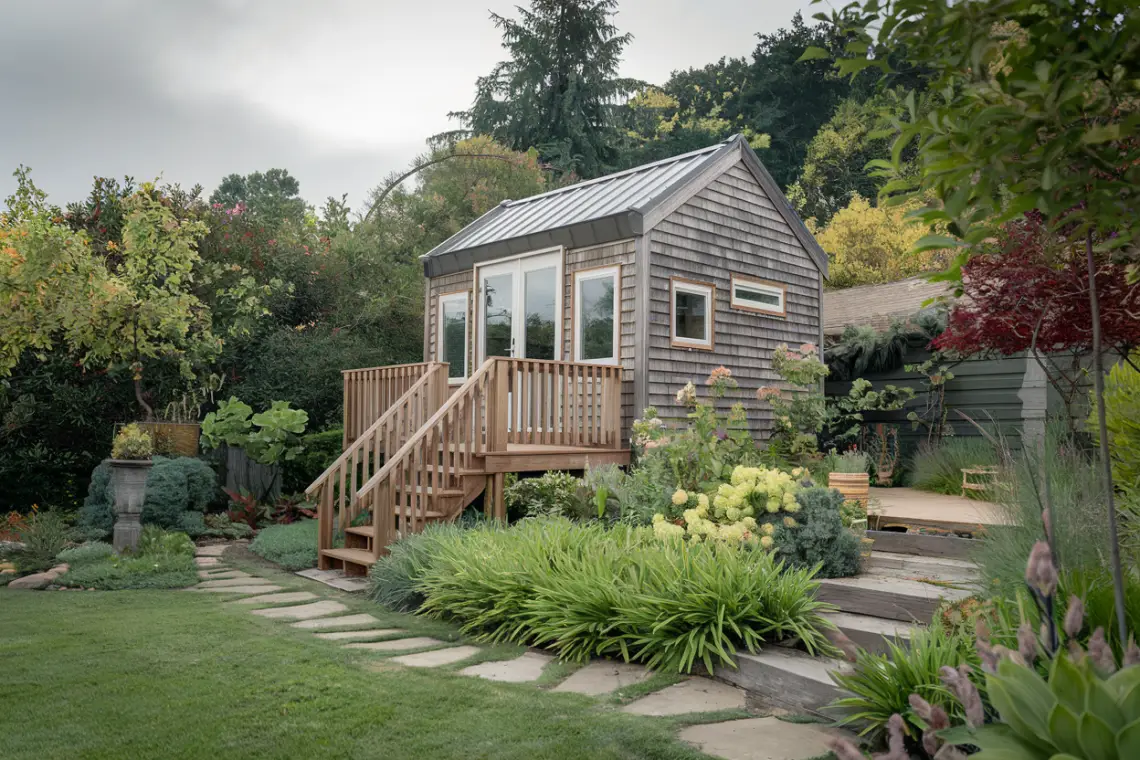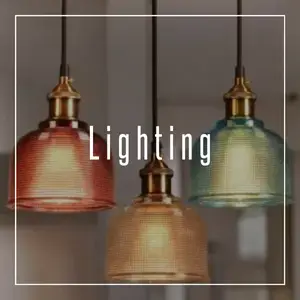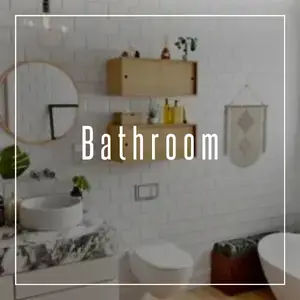Building a backyard guest house is a fantastic way to enhance your outdoor space while creating functional, versatile living quarters. Whether you’re looking for a charming retreat for visiting friends and family, a peaceful space for personal use, or even a potential rental opportunity, a guest house offers endless possibilities. From cozy cabins to modern tiny homes, the options are as diverse as your imagination. Not only does it provide additional living space, but it also increases your property’s value and creates a welcoming haven for everyone who stays.
However, creating a backyard guest house isn’t just about picking a design and starting construction. It requires thoughtful planning to ensure it meets your needs, fits your style, and aligns with local building regulations. From deciding on its purpose to selecting the perfect materials and layout, every detail matters.
In this guide, we’ll walk you through everything you need to know to build the perfect backyard guest house. Let’s explore inspiring ideas, practical tips, and essential steps to make this dream addition a reality.

Decide the Purpose of Your Guest House
Deciding the purpose of your backyard guest house is the first and most important step. Knowing how you plan to use the space will shape its design, size, and layout. A clear purpose helps you make the best choices for functionality and comfort. Start by thinking about your current needs and how they might evolve over time.
If you plan to use the guest house for hosting family or friends, focus on creating a cozy and inviting space. Include essentials like a bedroom, bathroom, and a small kitchenette. Think about features that make guests feel at home, such as comfortable furniture and plenty of storage for their belongings.

For those considering a rental unit, the purpose changes. A backyard guest house as a rental should meet the needs of short-term or long-term tenants. Include a fully equipped kitchen, private bathroom, and ample living space. Ensure the design complies with local rental regulations, which may require specific amenities or safety features.
If your goal is to have a personal retreat, the design can reflect your hobbies and lifestyle. A home office, art studio, or yoga space can be tailored to your needs. In this case, you might not need a full kitchen or separate bedroom. Instead, focus on creating an open layout with lots of natural light and storage for your tools or supplies.

Families might see a backyard guest house as a solution for multi-generational living. A small home for elderly parents or young adults gives them independence while staying close. Include accessible design features like wider doorways, grab bars, and a step-free entry.
Some homeowners want their backyard guest house to serve multiple purposes. For example, it could double as a home office during the week and a guest suite on weekends. In this case, a flexible design is key. Fold-away beds, multi-functional furniture, and open layouts make the space adaptable.

Finally, consider the future. Even if your backyard guest house serves one purpose now, it could evolve over time. A personal studio today might become a rental or a family suite later. Plan with flexibility in mind, using modular furniture and layouts that can be easily reconfigured.
By defining the purpose of your backyard guest house early, you ensure it meets your needs perfectly. A clear vision saves time, money, and stress as you move forward with the project.
Check Local Building Codes
Before you start building your backyard guest house, it’s crucial to check local building codes. These codes govern what you can and cannot do with your property. Ignoring them can lead to delays, fines, or even the need to tear down the structure.
First, visit your local government’s building department. Most municipalities have specific rules for accessory dwelling units (ADUs), which is the official term for backyard guest houses. These rules outline the size, height, and location of the structure. For example, some areas limit the square footage of ADUs to a percentage of the main house or the total lot size. Others might restrict how tall the guest house can be.
Zoning regulations also play a big role. Zoning laws determine how land can be used and what types of buildings are allowed in different areas. Your neighborhood might be zoned for single-family homes only, which could affect whether you can add a guest house. In some cases, you may need to apply for a zoning variance or special permit.

Setback requirements are another important factor. These rules dictate how far your guest house must be from property lines, fences, and other structures. For example, your city might require the guest house to be at least 10 feet from your property line or 20 feet from the main house. These requirements protect privacy and ensure fire safety.
Utility connections are also regulated by local codes. If you plan to add plumbing, electricity, or gas to your guest house, you’ll need permits and inspections. Some areas require separate utility meters for guest houses, especially if you plan to rent the space. Working with a licensed contractor can help you navigate these technical requirements.
Parking regulations might also apply. Some cities require additional parking spaces if you build a backyard guest house, especially for rental units. Check whether your property can accommodate the required parking without violating other codes.

In addition to city codes, don’t forget about homeowners’ association (HOA) rules if your neighborhood has one. HOAs often have stricter regulations than the city, covering everything from the size and style of the guest house to approved building materials. Failing to follow HOA guidelines can lead to fines or legal disputes.
Finally, consider environmental regulations. Some areas have rules protecting trees, water drainage, or wildlife habitats that could impact your project. For example, you might need a permit to remove trees or build near a waterway.
Checking local building codes ensures your backyard guest house is legal, safe, and up to standard. It also prevents costly mistakes and keeps your project on track. Always consult with professionals, like architects or contractors, who are familiar with your area’s regulations. This preparation will save you headaches later and help you move forward with confidence.

Choose the Right Spot
Choosing the right spot for your backyard guest house is a crucial step. The location determines how well the space functions and feels. A thoughtful choice ensures privacy, accessibility, and an overall harmonious design.
Start by assessing your backyard’s layout. Take note of where the sun rises and sets. A well-lit area will make the guest house feel more inviting, while strategic shading can help with temperature control. For example, placing the structure where it gets morning sun and afternoon shade creates a bright and comfortable living environment.
Next, think about accessibility. The guest house should be easy to reach from the main house, but not so close that it intrudes on your home’s privacy. A pathway or stepping stones can provide a clear connection while keeping the spaces distinct. If you plan to rent the guest house or use it for visitors, ensure the entrance is visible and welcoming without compromising the flow of your yard.

Consider the views from both the guest house and the main house. Guests will appreciate a pleasant outlook, like a garden or a landscaped area. At the same time, avoid placing the guest house in a way that blocks your favorite views from the main house. Achieving a balance between aesthetics and function will enhance the entire backyard.
Utility connections also play a big role. Position the guest house close to existing water, sewer, and electrical lines to minimize installation costs. If you’re adding plumbing, ensure the location supports proper drainage. Consult a professional to identify the most efficient placement for utility hookups.
Think about privacy for both your household and your guests. A corner of the yard or an area with natural screening, like trees or hedges, can provide a secluded feel. Adding fences or additional landscaping around the guest house can enhance privacy further.

Zoning and setback requirements may influence your choice of location. Check local building codes to determine how far the guest house needs to be from property lines and other structures. This ensures your project complies with regulations and avoids future complications.
Lastly, consider the overall flow of your backyard. The guest house should complement your existing space rather than disrupt it. If you have a pool, garden, or patio, place the guest house where it enhances these features instead of overcrowding them. Creating zones for relaxation, entertainment, and living will make your yard feel cohesive.
By carefully selecting the right spot, your backyard guest house will become a seamless part of your outdoor space. It will offer comfort, functionality, and charm for everyone who uses it.

Decide on the Size
The size of your backyard guest house plays a big role in its functionality and overall appeal. Deciding on the right size requires careful planning to meet your needs and fit within your outdoor space.
Start by thinking about the purpose of your guest house. If you want a simple place for visitors to stay, a smaller design might work. A single-room layout with a bed, bathroom, and small sitting area can make a cozy retreat. However, if the space will serve multiple purposes, such as a rental unit or an office, you may need a larger layout to include more features.
Measure your backyard to see how much space is available. The guest house should fit comfortably without overcrowding your yard. Leave room for landscaping, walkways, and outdoor features like patios or gardens. A well-balanced design keeps the yard feeling open and inviting.

Consider the needs of future guests. A family visiting for the holidays might need more room than a single traveler. Think about whether you’ll need multiple sleeping areas, a full kitchen, or a spacious living area. These choices impact the size of the structure and how it functions.
Budget plays an important role in size decisions. A bigger guest house will cost more to build and maintain. From materials to utilities, each added square foot increases expenses. If you’re working with a limited budget, prioritize must-have features and find ways to maximize space efficiently.
Local building codes may also influence the size of your guest house. Many areas have regulations about square footage, height, and proximity to property lines. Check these requirements early in the planning process to avoid costly changes later.

Think about storage and functionality. A guest house designed for long-term stays might need closets or built-in shelves. Adding storage space doesn’t require much extra room but can greatly enhance usability. For shorter stays, you might focus more on open living areas than storage.
Layout design can help you make the most of the available space. Multi-functional furniture, like a sofa bed or a foldable dining table, allows you to create a versatile interior. Vertical storage solutions and clever room arrangements can maximize every inch, letting you build smaller while still providing comfort.
Visualize the guest house in your yard before finalizing its size. Use stakes or chalk to mark the dimensions, so you can see how it fits. This step helps you ensure the guest house doesn’t feel too small or overwhelm the space.
By carefully deciding on the size, you’ll create a backyard guest house that fits your needs, budget, and outdoor space perfectly. A well-sized structure offers comfort, function, and charm for years to come.

Design a Functional Layout
Creating a functional layout for your backyard guest house is key to ensuring it meets your needs and feels inviting. A well-planned design makes the space efficient and comfortable, no matter its size. Start by identifying the main functions the guest house will serve. Will it be primarily for overnight guests, long-term stays, or multi-purpose use like an office or rental unit? Defining this purpose helps you allocate space to the most important features.
Think about zoning the interior into distinct areas. For instance, designate a sleeping space, living area, and bathroom. If the guest house includes a kitchenette, consider placing it close to the living space for easy access. In smaller layouts, open-concept designs work best to avoid making the space feel cramped. For example, a studio-style guest house can combine sleeping and living areas with clever furniture arrangements.

Maximize the flow of natural light to make the guest house feel larger. Large windows or sliding glass doors can brighten the space and create a connection to the outdoors. Strategically position the windows to enhance views and ensure privacy. Skylights or clerestory windows are also excellent options for adding light without sacrificing wall space.
Optimize storage solutions to keep the guest house tidy and functional. Built-in shelves, under-bed storage, and multi-purpose furniture like ottomans with hidden compartments can make a big difference. Even small spaces can benefit from vertical storage, such as tall shelving units or wall hooks for coats and bags.
Think carefully about the bathroom layout. A compact but efficient design can save space while still offering comfort. A walk-in shower, floating vanity, and recessed shelves are great options for small bathrooms. Placing the bathroom near plumbing lines can also save on construction costs.

For longer stays or rental use, a small kitchen or kitchenette adds value and convenience. Include essentials like a mini fridge, sink, microwave, and compact stovetop. Maximize counter and cabinet space by using pull-out drawers, foldable countertops, or magnetic racks for utensils.
Plan the entryway to be welcoming and practical. A covered porch or small patio area can provide a transition between the outdoors and indoors, offering space to relax or store shoes and coats. Inside, a small foyer or mudroom area helps guests feel at home.
Finally, consider adding a sense of personalization and comfort through the layout. Include a seating area for relaxation or a desk for work. Use rugs, curtains, and decor to define separate zones without physical barriers. A well-thought-out layout ensures the backyard guest house feels spacious, practical, and cozy for any use.

Add Essential Utilities
Adding essential utilities to your backyard guest house ensures it is livable, comfortable, and ready for guests or long-term use. These utilities include water, electricity, heating, cooling, and internet. Proper planning and installation are critical to meet building codes and make the space functional.
Water and Plumbing
Access to water is vital, especially if your guest house includes a bathroom or kitchenette. Work with a licensed plumber to connect the guest house to your main water line. Consider adding a tankless water heater to save space and provide efficient hot water on demand. Plumbing for sinks, showers, and toilets should be designed for minimal disruption to the overall layout. If installing plumbing seems too challenging, explore options like composting toilets or portable sinks, though these may be less convenient for long-term stays.

Electrical System
A reliable electrical system powers the lights, appliances, and gadgets your guests need. Hire a licensed electrician to ensure your guest house complies with local codes. Plan for adequate outlets throughout the space, keeping in mind modern needs like charging stations or entertainment systems. Consider energy-efficient lighting solutions, such as LED bulbs, to save on utility bills. If possible, install dimmer switches or multiple light sources to make the space versatile and cozy.
Heating and Cooling
Comfortable temperature control makes your guest house usable year-round. Depending on your climate, you may need both heating and cooling solutions. Mini-split systems are popular for guest houses because they are compact, energy-efficient, and can provide both heating and cooling. Portable options, like space heaters or fans, can work for smaller spaces or limited budgets. Ensure proper insulation and sealing to keep the temperature consistent and reduce energy costs.

Internet and Connectivity
Internet access is essential, especially for remote workers or guests who rely on streaming services. Extend your home Wi-Fi to the guest house using a signal booster or mesh system. If the guest house is far from the main house, consider running an Ethernet cable for a stable connection. Plan outlets for charging devices and ensure good connectivity for smart home features, such as thermostats or lighting controls.
Waste and Septic Solutions
Plan for waste disposal if your guest house has plumbing. Connect the sewer line to your home’s system or install a separate septic tank if required. For simpler setups, explore composting toilets or graywater recycling for minimal water use. Proper waste management ensures compliance with health and environmental standards.

Safety and Backup Utilities
Install smoke and carbon monoxide detectors to keep the space safe. Emergency lighting, surge protectors, and a small fire extinguisher can also add peace of mind. For areas prone to outages, a backup generator or solar panels can provide essential power.
With these utilities in place, your backyard guest house will be ready to welcome guests, offering convenience, comfort, and a fully equipped space for any stay.
Use Quality Materials
Using quality materials is one of the most important steps in building a durable and appealing backyard guest house. High-quality materials ensure your structure lasts longer, requires less maintenance, and provides comfort for anyone who stays there. While they might cost more upfront, they save you money over time by reducing repair and replacement needs.
Durable Exterior Materials
The exterior of your guest house faces constant exposure to the elements. Using sturdy materials like fiber cement siding, brick, or engineered wood can help the structure withstand harsh weather while maintaining its appearance. These materials resist rot, pests, and wear, ensuring your guest house stays in great condition for years. If you prefer a natural look, treated wood can be a good option, but it requires sealing and maintenance to prevent damage.
The roofing material is just as critical. Choose durable options like metal roofing or high-grade asphalt shingles. Metal roofs last decades and are resistant to fire, wind, and water. If you live in an area with heavy snowfall or intense sunlight, invest in roofing designed for those conditions.

Energy-Efficient Windows and Doors
Windows and doors play a significant role in the overall quality of your guest house. Energy-efficient windows with double or triple panes reduce heat transfer, keeping the interior comfortable in any season. They also lower energy bills, especially if you install proper insulation alongside them. Look for windows with a low-emissivity (Low-E) coating to block harmful UV rays while letting natural light in.
For doors, solid wood or insulated steel doors offer excellent durability and security. Ensure the doors are sealed tightly to prevent drafts and water leaks. Sliding glass doors can work well if you want to maximize light or create a seamless indoor-outdoor connection, but invest in high-quality models to avoid issues with wear over time.
Long-Lasting Interior Finishes
Inside your guest house, materials should be both attractive and practical. Opt for flooring that stands up to foot traffic, such as engineered hardwood, luxury vinyl planks, or tile. These materials are easy to clean, durable, and resistant to scratches. Avoid cheap laminate flooring or carpets that wear out quickly, especially if you plan to host many guests.
For walls and ceilings, use moisture-resistant drywall, particularly in bathrooms or kitchens, to prevent mold. Add quality paint with a washable finish for long-term use. High-grade cabinetry and countertops, like quartz or granite, enhance the kitchen or bathroom while standing up to daily wear.

Sustainable and Eco-Friendly Options
Sustainable materials like bamboo flooring, reclaimed wood, or recycled steel can make your guest house eco-friendly without compromising quality. These options often offer unique aesthetics while supporting environmental conservation. Solar panels, energy-efficient insulation, and rainwater harvesting systems are other ways to integrate sustainability into your build.
Invest in Good Foundations
The foundation is the backbone of your guest house. Concrete foundations, poured or slab-on-grade, provide stability and protect against ground movement or moisture issues. Don’t cut corners here—ensure proper drainage and reinforcement to avoid costly repairs later.
By prioritizing quality materials in every aspect of construction, you’ll create a backyard guest house that is safe, stylish, and built to last. The investment in high-quality choices will enhance its value and make it a standout feature in your yard.

Decorate for Comfort
Decorating your backyard guest house for comfort is all about creating a welcoming and cozy atmosphere for visitors. The right decor can transform a simple space into a retreat where guests feel at home. Focus on practical and aesthetic choices to achieve a balance of style and functionality.
Prioritize Cozy Furnishings
Furnishings set the tone for comfort. Start with a bed that has a high-quality mattress, soft sheets, and plush pillows. Layer the bed with cozy throws or quilts to add warmth and texture. If your guest house has a seating area, opt for a comfortable sofa or armchairs with cushions that encourage relaxation. A small coffee table can double as a space for drinks and books.
Incorporate Soft Textiles
Textiles play a big role in creating a comfortable vibe. Add area rugs to make the space feel warm and inviting, especially if the floors are tile or wood. Rugs can also help define spaces in open layouts. Use curtains or drapes that offer privacy and light control, choosing materials like linen or cotton for an airy feel. Don’t forget to include extra throws and blankets for colder evenings.

Choose Warm Lighting
Lighting has a significant impact on mood. Use a mix of lighting options, including overhead fixtures, floor lamps, and bedside lights, to create layers of light. Opt for warm-toned bulbs to make the space feel inviting. Table lamps with dimmers are great for flexibility, allowing guests to adjust the brightness to their liking. Accent lighting, such as string lights or wall sconces, can add charm and personality.
Add Thoughtful Decor
Personal touches make a guest house feel special. Decorate with artwork, photographs, or items that reflect your personality or local culture. Plants are a simple yet effective way to bring life to space and improve air quality. Choose low-maintenance options like succulents or pothos for easy care. Place them on shelves, window sills, or tabletops to add greenery.
Focus on Practical Comforts
Decorating for comfort also means thinking about your guests’ needs. Include a small table or desk for work or dining. Provide hooks for hanging clothes and a small dresser or storage solution for personal items. Add a welcome basket with essentials like snacks, water bottles, and toiletries for an extra thoughtful touch.

Keep It Neutral and Versatile
When choosing colors and patterns, stick to neutral tones and soft hues. These create a calm, versatile backdrop that can appeal to any guest. Pops of color can come from decor items like pillows, artwork, or flowers.
By combining cozy furniture, soft lighting, and thoughtful decor, you can create a backyard guest house that offers comfort and style. Guests will appreciate the effort and feel truly at home during their stay.
Include Outdoor Features
Including outdoor features in your backyard guest house design can elevate the space, adding both functionality and charm. A well-designed outdoor area will not only enhance the appeal of the guest house but also provide guests with a comfortable place to relax and enjoy the surroundings. Whether you have a large backyard or a small garden, there are plenty of ways to integrate outdoor features that will complement your guest house and make it a more inviting retreat.
Create a Cozy Outdoor Seating Area
A comfortable seating area outside is an essential addition to your backyard guest house. Think about incorporating a small patio or deck area with weather-resistant furniture. A set of lounge chairs, a small table, and perhaps a hammock or swing will give guests a place to unwind and enjoy nature. Consider adding pillows or cushions for extra comfort. If you have the space, a larger dining table for outdoor meals or gatherings can also be a great option.

Add a Fire Pit or Outdoor Fireplace
A fire pit or outdoor fireplace is an excellent feature that adds both warmth and ambiance to the outdoor area. It’s perfect for cooler evenings and provides a cozy spot for guests to gather around. A fire pit can be built using stones or bricks and surrounded by comfortable seating, creating a relaxed, rustic atmosphere. If you prefer a more elegant touch, an outdoor fireplace can offer a more sophisticated feel. Either way, a fire feature brings charm and comfort to the backyard, making it an ideal place for your guests to enjoy their stay.
Incorporate Outdoor Lighting
Good lighting is essential for creating an inviting atmosphere at night. String lights, lanterns, or solar-powered path lights can add a warm, cozy glow to the exterior of your guest house. If your guest house includes an outdoor seating area or patio, consider placing lights along the perimeter or overhead to create a magical effect. Lighting can also help define outdoor spaces, making your backyard feel larger and more functional. Solar-powered lights are energy-efficient and easy to install, making them a perfect option for an eco-friendly and low-maintenance outdoor feature.
Design a Beautiful Garden or Landscaping
Landscaping is an important part of creating an inviting atmosphere for your backyard guest house. A well-planned garden with colorful flowers, shrubs, and greenery will add beauty and texture to the outdoor space. If you have a small yard, consider planting low-maintenance plants that bloom in different seasons to keep the space vibrant year-round. If your guest house is situated near a pool or a hot tub, add plants that can thrive in wet environments, such as ferns or water lilies. For a more sustainable garden, consider planting native species that are adapted to the local climate and require less water and care.

Provide Privacy with Screens or Fencing
Privacy is important for both you and your guests, so consider adding some outdoor features that help create a sense of seclusion. Installing privacy screens, fencing, or even trellises with climbing vines can help define the space and shield guests from the view of neighbors or passersby. Bamboo, wooden slats, or metal mesh panels are great options for building privacy screens, and they can also add a touch of style and texture to the backyard.
Include a Pathway or Walkway
Adding a pathway leading from the main house to the guest house, or throughout the backyard, can enhance both the aesthetic and functional value of your outdoor space. Pathways made from natural stone, pavers, or gravel can create a charming look while providing easy access to the guest house. This feature also helps to separate the backyard from the rest of the property, giving guests a sense of privacy. Plus, a walkway is practical during rainy weather and can be a useful guide for guests to navigate the area safely.
By including these outdoor features in your backyard guest house design, you’ll not only make the space more functional but also create an inviting atmosphere that will enhance your guests’ experience. Whether it’s a cozy seating area by the fire, beautifully lit pathways, or a garden filled with flowers, these elements will transform your backyard into a tranquil oasis that your guests will appreciate and enjoy.

Stay on Budget
Building a backyard guest house can be an exciting project, but it’s important to stay on budget to avoid unexpected costs. From planning the design to choosing materials and contractors, costs can quickly add up. By following a few strategic steps, you can build a guest house that meets your needs and stays within your financial limits.
Set a Realistic Budget
Before starting your project, it’s crucial to establish a clear budget. Begin by determining how much you’re willing to spend on the entire project. Be sure to factor in all aspects of the build, including permits, design, materials, labor, landscaping, and utilities. Don’t forget to set aside 10-15% of the total budget for unexpected expenses. Having a specific budget in place will help guide your decisions and prevent you from overspending.
Research Costs Thoroughly
It’s important to get a solid understanding of the costs involved before making any purchases. Research the prices of materials, furniture, fixtures, and appliances. Reach out to contractors for quotes, and make sure to compare different suppliers. This research will give you a more accurate idea of the costs involved in building a backyard guest house and will allow you to make informed decisions about what to include in your design. Avoid rushing into decisions without comparing options, as this can lead to higher-than-expected costs.

Choose Affordable Materials
High-quality materials can be expensive, but there are always affordable options that offer similar looks and functionality. For example, instead of using expensive hardwood floors, consider laminate or vinyl flooring that mimics the look of wood. Instead of custom cabinetry, opt for ready-made pieces that are more cost-effective. While it’s tempting to go for premium materials, there are budget-friendly alternatives that can still achieve the desired aesthetic and durability.
DIY When Possible
If you’re handy or have the time, consider tackling some of the work yourself. Many aspects of building a backyard guest house can be done as DIY projects. For instance, you could install landscaping features like a flower garden, a pathway, or even build a simple fence. Painting walls, assembling furniture, and adding finishing touches like light fixtures are also tasks you can take on yourself to save money on labor costs. However, for larger projects such as electrical work or plumbing, it’s best to hire professionals to ensure safety and compliance with local codes.
Opt for Prefabricated Options
Another way to stay on budget is by opting for prefabricated or modular elements. Many companies offer prefab guest house kits or modular units that can be assembled more quickly and for a lower cost than building from scratch. These structures often include pre-built walls, floors, and roofs, which can significantly reduce both construction time and labor costs. Prefabricated options also come with the added benefit of being highly customizable, allowing you to add your personal touch while still staying within budget.

Prioritize Features
When designing your backyard guest house, it’s essential to prioritize the features that matter most to you. Determine which elements are necessary for the functionality and comfort of your guest house and which are nice to have but not essential. For example, you might prioritize a comfortable bed, a small kitchenette, and a bathroom over adding a luxury bathtub or a full-size living room. By focusing on the most important features, you can create a well-designed guest house without going over budget.
Consider Financing Options
If your budget is tight, explore financing options such as personal loans or home equity loans to help cover the cost of the project. Some financial institutions offer loans specifically for home improvements, which could be used to fund your backyard guest house. Be sure to research interest rates and repayment terms to find an option that fits your budget.
By following these strategies, you can build a backyard guest house that fits within your financial limits without sacrificing quality or style. Planning ahead, researching materials, and being mindful of where you can cut costs will help you stay on budget while creating a beautiful and functional space for guests.

Final Thoughts
Building the perfect backyard guest house is a journey that requires careful planning and thoughtful decision-making, but the rewards are undeniable. By setting clear goals, considering your needs, and making smart design choices, you can create a space that is not only functional but also a beautiful extension of your home. Whether your guest house serves as a cozy retreat for family and friends, a rental property to generate extra income, or a private haven for personal use, it will undoubtedly become a cherished addition to your property.
As you embark on this project, remember that attention to detail is key. From the layout and materials to the finishing touches, every decision contributes to the overall success of your guest house. With proper planning, your new space can reflect your style, enhance your outdoor area, and add lasting value to your home.
So, why wait? Start planning your dream backyard guest house today, and enjoy the benefits for years to come. It’s more than just an extra room—it’s an investment in your home, your lifestyle, and your future.
Also Read:
• From Drab to Fab: Easy Exterior Home Upgrades for Ultimate Curb Appeal
















